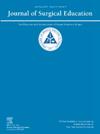Is Signaling the Solution? Curbing Excess Volumes and Costs of Urology Residency Applications With Large-Volume Preference Signaling
IF 2.1
3区 医学
Q1 EDUCATION, SCIENTIFIC DISCIPLINES
引用次数: 0
Abstract
Introduction
Rising annual volumes of urology residency applications have increased applicants’ expenses and program faculty’s time costs. A “large-volume” preference signaling initiative that was introduced in the 2024 residency match, in which applicants may “signal” their interest in up to 30 programs, has the potential to reduce excess application volumes. We aimed to characterize changes in urology residency application volumes and model the financial impact to residency applicants and programs following implementation of large-volume preference signaling.
Methods
Using public data from the Association of American Medical Colleges and American Urological Association, we analyzed urology residency application and interview volumes during 2013 to 2024 and modeled preinterview costs during 2017 to 2024. To model applicants’ costs, we calculated submission fees for the total applicant pool annually. For program costs, we assumed that submitted applications undergo 2 rounds of faculty screening and that large-volume preference signaling permits programs to halve the initial screening pool. All costs were adjusted for inflation.
Results
From 2013 to 2023, the average number of applications submitted per applicant increased by 66% (53 to 83 applications). In 2024, large-volume preference signaling decreased submitted applications by 25% to 66 per applicant, while average interviews given by programs and taken by applicants remained unchanged. In the cost model, large-volume preference signaling resulted in applicants’ average submission costs decreasing by 31% per applicant and programs’ review costs decreasing by 25% per program. The total cost of application submission and review decreased by 26% from $3.05 million to $2.25 million, corresponding to a per-vacancy cost of $5,836, the lowest cost observed during the study period.
Conclusions
Implementation of large-volume preference signaling resulted in markedly decreased urology residency application volumes and program review time, resulting in substantially lower total costs of the submission and review process.
信号是解决方案吗?用大容量偏好信号抑制泌尿外科住院医师申请的过量数量和成本
每年泌尿外科住院医师申请数量的增加增加了申请人的费用和项目教师的时间成本。在2024年的住院医师选拔中引入了“大量”偏好信号倡议,申请人可以“表明”他们对多达30个项目的兴趣,这有可能减少超额的申请数量。我们的目的是描述泌尿外科住院医师申请数量的变化,并模拟实施大量偏好信号后对住院医师申请人和项目的财务影响。方法利用美国医学院协会和美国泌尿外科协会的公开数据,分析2013年至2024年泌尿外科住院医师申请和面试数量,并对2017年至2024年的面试前成本进行建模。为了模拟申请人的成本,我们每年计算所有申请人的提交费用。对于项目成本,我们假设提交的申请经过两轮教师筛选,并且大量的偏好信号允许项目将初始筛选池减半。所有费用都按通货膨胀调整了。结果从2013年到2023年,每位申请人平均提交的申请数量增加了66%(53份到83份)。2024年,大量偏好信号使提交的申请减少了25%,降至每位申请人66份,而项目和申请人的平均面试保持不变。在成本模型中,大容量偏好信号导致申请人的平均提交成本降低了31%,每个项目的审查成本降低了25%。提交申请和审查的总费用从305万美元下降到225万美元,下降了26%,相当于每个空缺的费用为5,836美元,这是研究期间所观察到的最低费用。结论大容量偏好信号的实施显著减少了泌尿外科住院医师申请数量和项目审查时间,从而大大降低了提交和审查过程的总成本。
本文章由计算机程序翻译,如有差异,请以英文原文为准。
求助全文
约1分钟内获得全文
求助全文
来源期刊

Journal of Surgical Education
EDUCATION, SCIENTIFIC DISCIPLINES-SURGERY
CiteScore
5.60
自引率
10.30%
发文量
261
审稿时长
48 days
期刊介绍:
The Journal of Surgical Education (JSE) is dedicated to advancing the field of surgical education through original research. The journal publishes research articles in all surgical disciplines on topics relative to the education of surgical students, residents, and fellows, as well as practicing surgeons. Our readers look to JSE for timely, innovative research findings from the international surgical education community. As the official journal of the Association of Program Directors in Surgery (APDS), JSE publishes the proceedings of the annual APDS meeting held during Surgery Education Week.
 求助内容:
求助内容: 应助结果提醒方式:
应助结果提醒方式:


